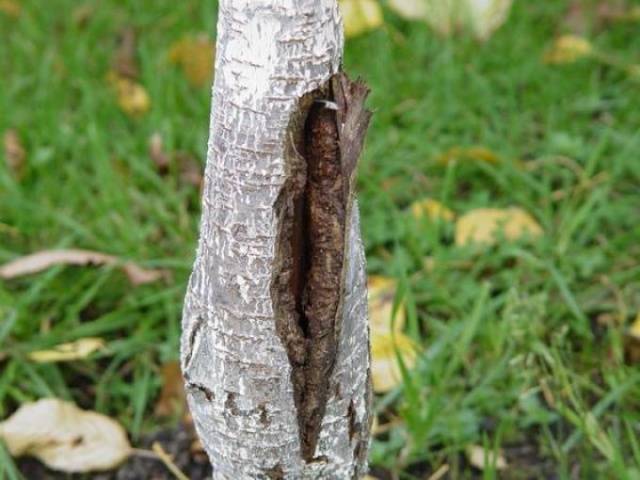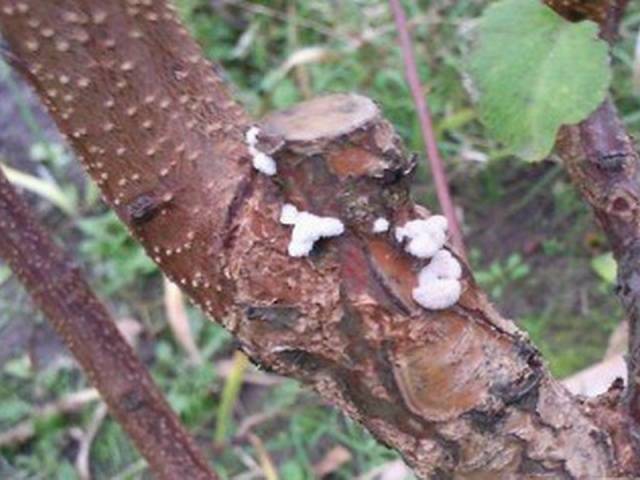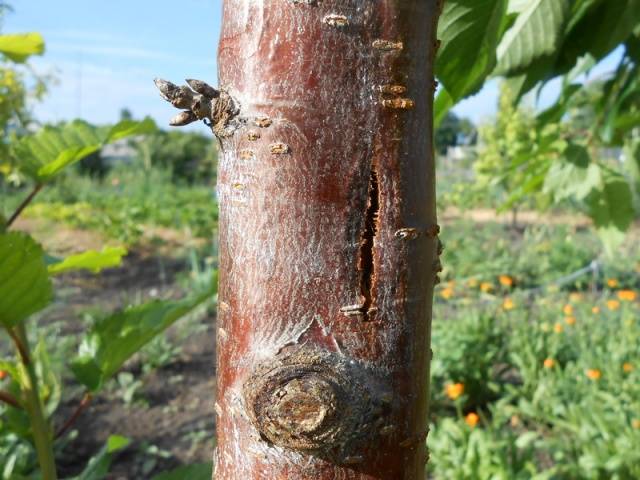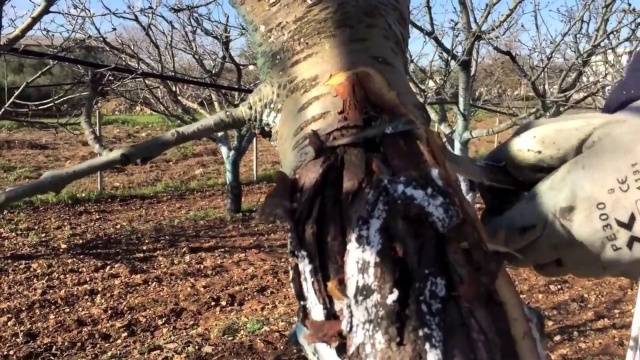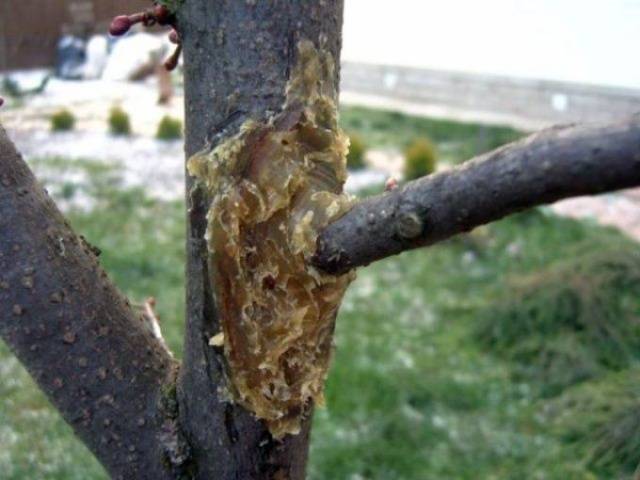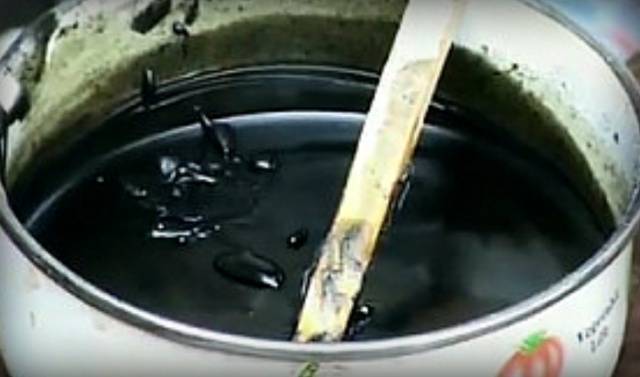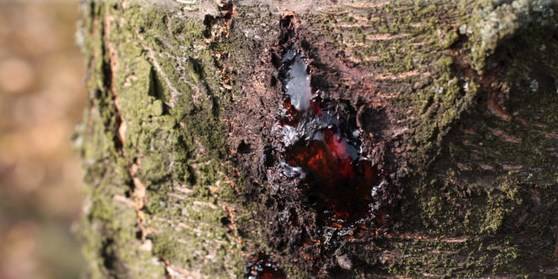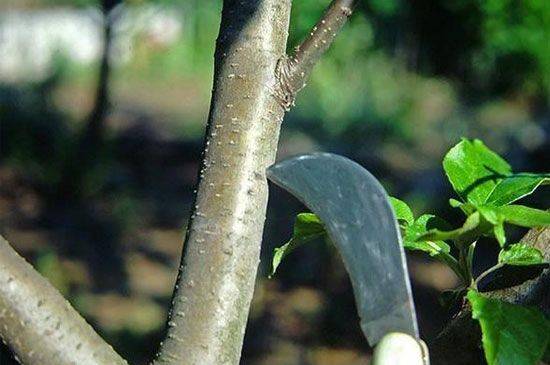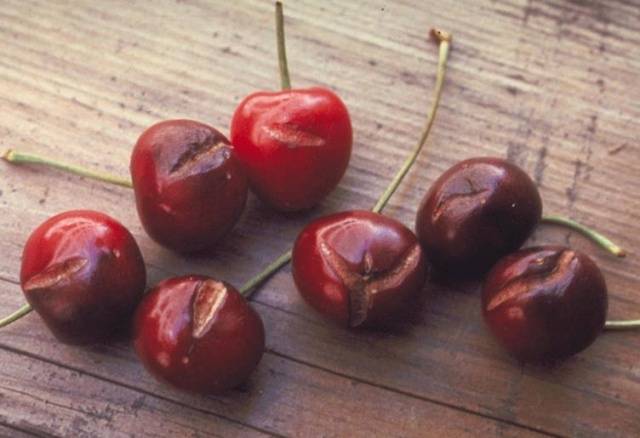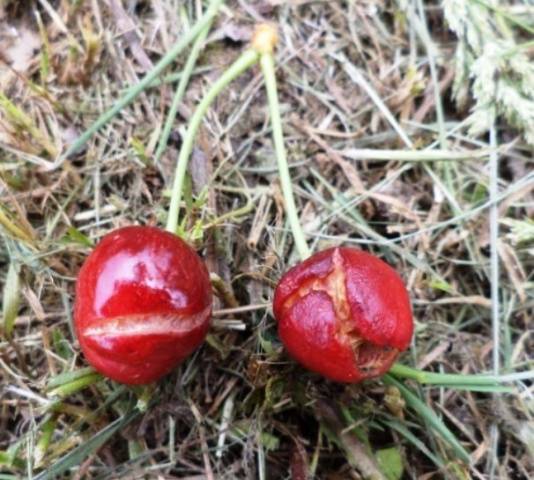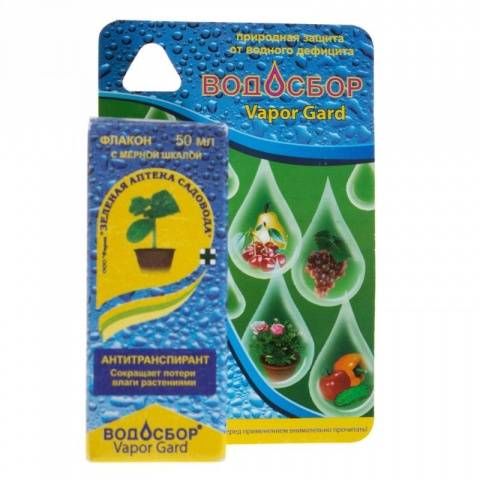Content
Gardeners who have planted cherries in their garden usually hope for a bountiful and tasty harvest for many years. It is all the more offensive when the cherry is cracked, which seems to be looked after according to all the rules of agronomic science. This problem is typical for both sweet cherry fruits and its bark, branches and especially the trunk in its various parts, and regardless of the region where the fruit crop is grown.
Why the trunk is cracking, as well as the fruits of the cherry, how to cope with these misfortunes and what preventive work should be done - you can learn about all this from the article.
Why does the cherry burst
The main reason why cherries crack is due to excess moisture both in the soil and in the air. In general, all stone fruit crops can hardly tolerate waterlogging of the soil, and as for the sweet cherry, it is especially sensitive to it. That is why it is categorically not recommended to plant cherries in lowlands where water accumulates, or where groundwater is located high.
In years with high rainfall, the harvest may be minimal, and if the root system is severely soaked, cherry trees may even die in the coming winter.
Cracking of the bark of cherry trees can, along with waterlogging, cause large temperature drops in winter and especially in early spring. These are the so-called sunburns and frostbites. A combination of these factors within one year can be especially dangerous.
When small individual cracks appear, the cherry tree itself will take on their treatment and, in favorable conditions during the summer period, will be able to cope with the tightening of wounds. It is another matter if the cracks are large and in unfavorable places (in the forks of branches and trunks), especially if various kinds of pathogens get into them. In these cases, the trees have little chance of survival.
Cherry bark problems and diseases and their treatment
Cracks in the bark on the trunk or branches of a sweet cherry are initially only an aesthetic problem. But if left unattended, the consequences can be more than serious.
When the bark and trunk of a cherry crack, infectious diseases can develop:
- bacterial cancer;
- false tinder fungus;
- sulfur-yellow tinder fungus.
Non-infectious gum removal is referred to.
When an infection gets into a crack in a cherry tree, diseases of the first group develop, with which it is very difficult or almost impossible to fight. Therefore, prevention and timely treatment of wounds in cherry trees is very important.
During gum removal, a sticky translucent mass - gum, which solidifies in the form of glassy drops, is released in various places on the trunks and branches of the cherry.
The symptoms of the disease are especially active:
- on acidic or waterlogged soils;
- after applying high doses of fertilizers, especially nitrogen fertilizers;
- with the weakening of cherries with infectious diseases such as monoliosis, clasterosporium;
- after damage to the cherry bark as a result of frost damage or sunburn.
In fact, gum flow is a tree's reaction to any damage or weakening.
Why do the bark and trunk crack on cherries
The primary source of all diseases of the bark and trunk of sweet cherry is the appearance of cracks, therefore, first of all, it is necessary to understand in detail the reasons leading to this phenomenon.
- As mentioned earlier, one of the main reasons that the bark of cherries cracks is excessive soil moisture. As a result, the young bark begins to grow rapidly, and the old, not so elastic, cannot withstand such a pressure and cracks.
- An equally common cause is exposure to contrast temperatures. It is especially dangerous for cherry trees in early spring, when the sun begins to warm up very intensely. Scientists measured the temperature on the southern sunny side of the tree trunk in February - March: it reached 15 ... 20 ° C. At the same time, the ambient temperature in the shade was -15… -18 ° C. The sap of trees in the sun liquefies under the influence of heat, and then freezes - as a result, cracks appear on the bark.
- Sunburns, which look like brown or reddish spots on the branches or trunks of cherries, are no less dangerous. In these places, under the influence of sunlight, the process of photosynthesis begins, although not as active as in the leaves. But the substances formed as a result of its activity have nowhere to go: in winter, there are no growth points, and energy can be spent on the development of all kinds of infections that are dormant in the tree.
- Another reason for the appearance of gum leakage and, as a result, the formation of cracks in the cherry is the mistakes made when pruning the tree (untimely or excessive pruning).
- Improper planting of cherries, especially the excessive deepening of its root collar, can also lead to the fact that the tree bark cracks.
- In addition, all stone fruit trees, and cherries in particular, have a predisposition to the appearance of cracks in the trunk due to the peculiarities of the growth of standard cells.
Therefore, it is very important not to overdo it with the introduction of nitrogen-containing mineral and organic fertilizers, which affect the growth and development of plants.
What to do if the bark of a cherry bursts
First, you should optimize the irrigation regime, try not to overmoisten the soil in which the sweet cherry grows.
Unfortunately, humans cannot cope with constant torrential rains. Therefore, the question arises: what to do when the cherry trunk has already burst.
- Whatever the size of the damage to the bark on the trunk, it must be cleaned with a sharp instrument to living tissue and slightly dried.
- Then treat with any 1-3% solution containing copper sulfate (Hom, Oxyhom, Bordeaux mixture). To do this, dilute 100-300 ml of the solution in 10 liters of water. It is necessary to spray so that the mixture does not drain from the bark, but settles in the crack.
It is good if the edges of the wound on the bark have a light shade: this means that the damage to the trunk is caused by purely physiological reasons and the infection has not yet been brought in.
If the edges of the bark are brown or it is completely impossible to clean the wound (for example, due to its inconvenient location), then more intensive treatment will be required. In this case, you can use a nitrophene solution. This is a rather serious fungicidal preparation that can destroy all infection on dead wood, while it practically does not penetrate into living tissue. But special precautions should be taken when working with it.
After treatment with fungicides, the crack in the tree should be closed with one of the suitable putties. The easiest way is to use a garden var. But not every pitch contributes to good healing of wounds on a tree. Before using (buying), you need to study the composition of this product.
Compositions based on natural beeswax, resin of coniferous trees, vegetable oils, protective phytoncides work well on cracks in cherry trees.
Garden var is easy to cook with your own hands.
You need to cook:
- 2 parts spruce or pine resin;
- 1.5 parts flaxseed oil;
- 1 part turpentine;
- 1 part beeswax.
Melt all ingredients in a water bath and mix well.
If, as a result of the influence of the garden varnish, the crack on the cherry tree still does not heal for a long time, you can try to periodically lubricate the wound with a putty made from oily clay and horse or cow dung.
A natural recipe for healing wounds is effective, according to which trees were treated several centuries ago:
- manure - 16 parts;
- chalk or dry lime - 8 parts;
- wood ash - 8 parts;
- river sand - 1 part.
The disadvantage of putties is that they are washed off rather quickly by rains. But on the other hand, they do not interfere with the natural overgrowing of wounds and give a protective and healing effect.
How to deal with cracks on the trunk of a cherry: prevention
- The most common reasons for the appearance of cracks on the trunk of a sweet cherry are weather conditions: frost and heavy rainfall. Therefore, one of the main prophylactic means of struggle is the selection and planting of cherry varieties that are suitable for the requirements for the climatic conditions of the area.
- Also, when planting a tree, it is necessary to choose an elevated place with a deep level of groundwater standing.
- Planting should be carried out in accordance with all the rules, in no case deepening the root collar or the grafting site of the cherry seedling. It is better if they rise above the ground by a few centimeters.
- The soil for planting should not be too acidic (pH in the range of 5.5–6.5), otherwise it is necessary to add lime or at least wood ash.
- Excessive moisture should not be allowed, especially if it is rainy weather. It is best to grow cherries using drip irrigation.
- Regular whitewashing of trunks and lower branches in the autumn period and repeating the procedure in early spring, if necessary, helps well against frostbites and sunburns. You can also additionally protect tree trunks by tying them with spruce branches, straw or spanbond.
- As a preventive measure for the appearance of cracks in the cherry, the trunk is treated annually with an ash and soap solution. In 10 liters of hot water dissolve 2-3 kg of ash and 50 g of soap, and then with a rag soaked in the solution, abundantly lubricate the branches and the trunk. This procedure can even be carried out twice a year: in spring and autumn, since it not only disinfects the bark, but is also a good top dressing.
Cherry bark leaves: causes and treatment
There can be several reasons for the separation of the cherry bark from the trunk.
- Large temperature differences in early spring, when the bark swells and expands during a sunny day, and shrinks on a frosty night, but it can no longer rise to its former place. The bark peels off from the tree trunk. Most often, this process can be observed from the southern and southwestern sides. As a preventive measure and treatment, it is necessary to protect the trunks in the fall with whitewashing or mechanically, tying them with covering material or spruce branches.
- Bacterial stone carcinoma - a disease that is practically not amenable to treatment.In this case, the crust can die off from either side of the world.
If cracks have already appeared, then furrowing will be a wonderful remedy against their enlargement. This method can also be used for prophylaxis from the 4th to 5th year of the cherry's life. The best period for the procedure is April - May.
With a sharp and clean knife, carefully cut grooves about 15 cm long on the bark. Then, making an interval of several centimeters, cut the next groove; this can be done along the entire length of the barrel.
It is important that the depth of the furrow is no more than 3 mm, the knife should not cut through the wood, but only the bark.
After stepping back 7–9 cm, you can cut the next furrows.
Cambium begins to grow vigorously in the area of the furrows - the wounds heal quickly, and at the same time the excess stress on the cortex is relieved. Cracks, if they appear, also quickly heal. As a result, the thickness of the trunks of trees increases rapidly, they grow better and bear fruit more abundantly.
Peeling bark on a cherry tree: causes and methods of treatment
The peeling of the bark on cherries and a decrease in the number of fruits indicates that the tree lacks three trace elements that are responsible for the plasticity of cells:
- sulfur;
- molybdenum;
- magnesium.
Top dressing on a leaf can help cherries. Such spraying with the above preparations must be carried out immediately after flowering and a second time after harvesting.
In addition, the bark must be lightly peeled and thoroughly chalked.
Why do cherry fruits crack on a tree
The main reasons for fruit cracking on cherries are lack or excess of moisture.
Possible reasons
Cherry fruits crack when moisture accumulates on the surface of their skin in unlimited quantities. This can be due to unfavorable weather conditions and too much watering.
Another reason for the cracking of cherry fruits is the oversaturation of moisture in the roots of the tree. Moreover, this can happen during prolonged rains - in this case, the upper part of the berries most often suffers. And if the irrigation was uneven or after a long drought a heavy downpour fell, the berries develop cracks mainly on the sides.
When the tree receives abundant moisture, the berry begins to grow rapidly in size, and the skin does not keep up with it and breaks. Berries can be eaten, made juices and compotes from them, but cherries are no longer suitable for sale.
How to prevent cracking of cherries
To prevent the appearance of cracks in cherry fruits, it is necessary to provide the trees with uniform moisture. The easiest way to do this is with a drip irrigator.
You can also use the following guidelines:
- In spring, be careful with watering and start abundant moisture only from May, when the leaf mass is growing, but only in dry weather.
- Regular hydration is especially important for cherries at the beginning of flowering and after, during the growth of the fruit. When the berries begin to ripen, the watering can be slightly reduced.
- In the second half of summer, the amount of moisture is not so significant, but it is important to water the cherry trees abundantly before winter with the onset of the first autumn frosts.
- Choosing and planting the right cherry variety will also help to cope with this problem.
- Fruits of such varieties as Summit, Lapence, Yaroslavna, Valeria, have a denser pulp, thick skin and are not so prone to cracking.
What drugs are there for cracking cherries?
There are a number of drugs, the use of which can reduce the cracking of cherries. They cover the fruit with a transparent film that increases the elasticity of the skin and prevents moisture loss.
The simplest remedy is to spray the trees with a calcium chloride solution. Its disadvantage lies only in the fact that the fruits must be washed with water before consumption or sale in order to remove salt deposits.
The preparation "Vodosbor" (from coniferous resin) has an exclusively natural origin.
With a protective purpose, the following drugs are used:
- 30-D;
- Calbit C;
- Frutasol;
- Platinum;
- Fertilider.
Many of these remedies not only protect cherries from cracking, but also reduce the ripening time and increase the size of the fruit and the sugar content in them.
Conclusion
Of course, cherries also crack as a result of circumstances beyond the control of a person, but compliance with some simple rules for care can help, if not completely cope with the situation, then make life easier for both trees and gardeners.
A variety of drugs can come to the rescue, some of which you can do yourself.
